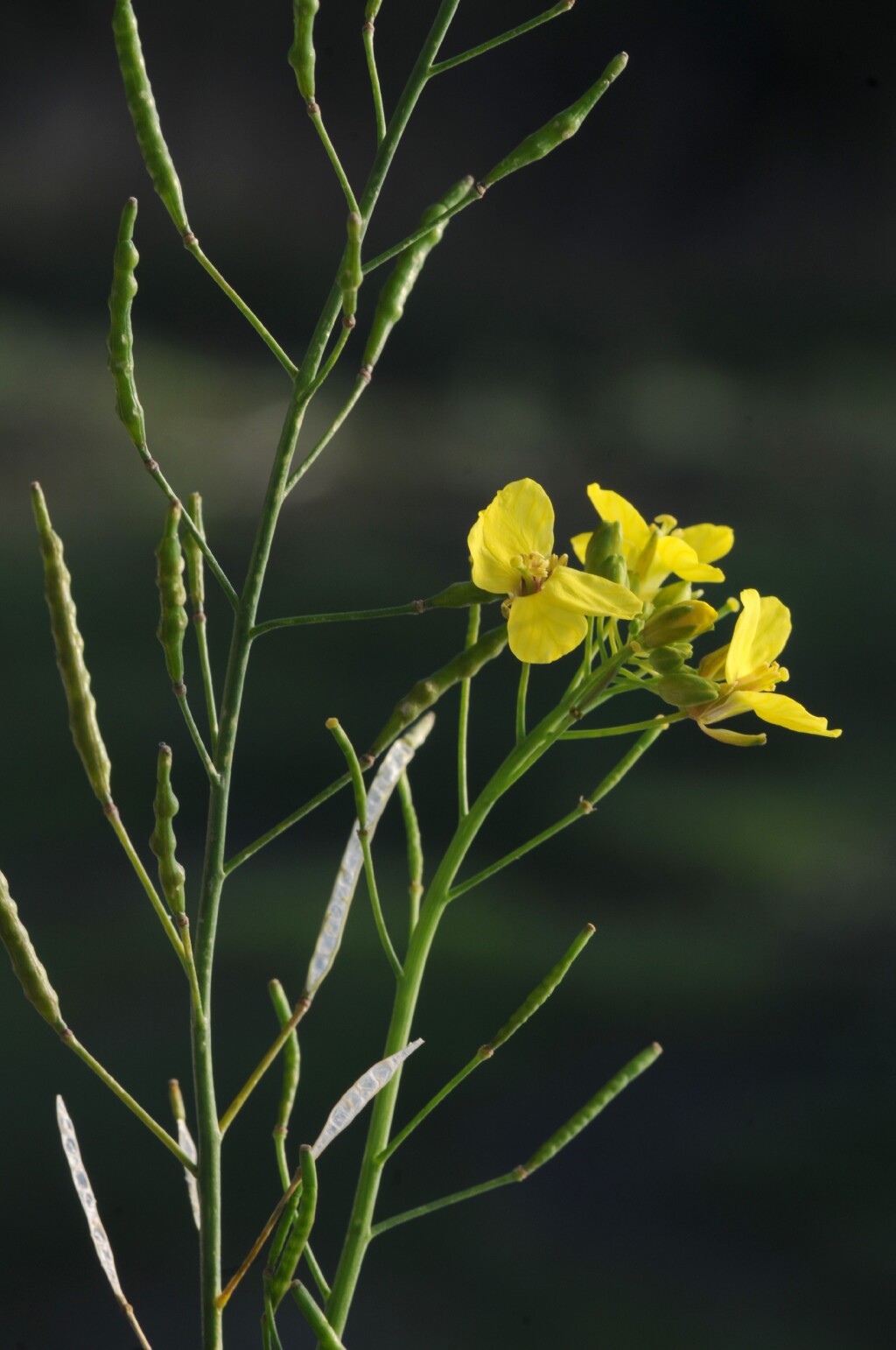Brassica
Annual, biennial or perennial herbs (sometimes woody at base), glaucous, glabrous or with scattered, simple bristles. Leaves variable in shape and size, at least some entire and not stem-clasping. Inflorescence a panicle or corymb. Sepals erect or somewhat spreading, dimorphic; petals clawed, obovate, yellow; stamens 6; ovary usually sessile. Fruit terete to somewhat flattened; elongate (more than 3 times as long as broad); style short, stigma large, attenuate, depressed capitate, more or less bilobed; valves with a prominent midvein (and less distinct lateral net-veins); beak elongate-conical; seeds spherical or globular, numerous in valve region, few or absent in beak, 1 row per locule.
Native to the Europe-Mediterranean region and to Asia, but including many cosmopolitan cultivated and weed species. Some 100 species world-wide; 9 naturalised in Australia.
Brassica has at least some leaves entire and not stem-clasping; the elongate fruits have a distinct beak (1–30 mm long); each valve of the dried fruit has a prominent midvein; and there is 1 row of seeds per locule.
Entwisle, T.J. (1996). Brassicaceae. In: Walsh, N.G.; Entwisle, T.J., Flora of Victoria Vol. 3, Dicotyledons Winteraceae to Myrtaceae, pp. 399–459. Inkata Press, Melbourne.
 Spinning
Spinning



